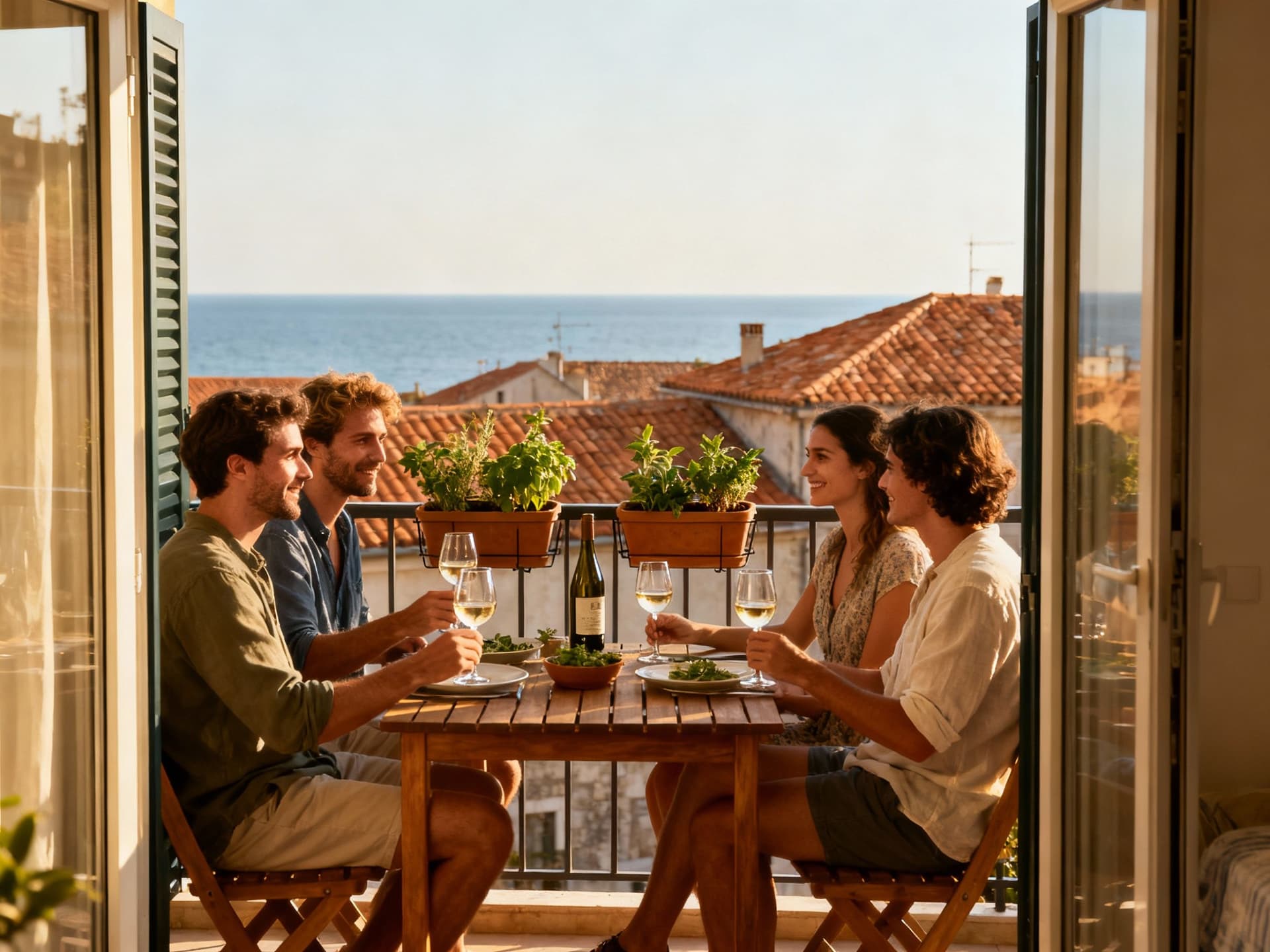Croatia’s Coastal Price Paradox: Premiums That Still Yield
Croatia’s coastal premiums hide a calculable trade‑off: lifestyle appeal raises prices, but disciplined underwriting and local expertise can preserve attractive net yields.
Imagine sipping espresso on Šibenik’s Riva as fishermen repair nets, then walking five minutes to a narrow stone stair that opens onto a rental-ready one‑bedroom with sea views. Croatia sells those scenes — sunlit terraces, late‑night konobas and island ferries — but it also hides a market logic that’s less romantic and more investment‑disciplined. This guide shows where lifestyle and yield actually meet, with on‑the‑ground details, data and a few contrarian bets.
Living Croatia: everyday rhythms that shape value

Croatia is both Mediterranean idyll and working country: morning markets on Dolac in Zagreb, weekday cafés in Rovinj, late‑season sailing from Split. Tourism now runs longer into spring and autumn, which compresses seasonality and supports longer letting windows — a direct input into rental income assumptions for coastal assets. In 2024–25 tourist arrivals and spending rose, increasing demand for well‑located short and medium‑term rentals along the Adriatic.
Neighbourhood focus: Dalmatian coast vs Zagreb’s urban fabric
On the Dalmatian coast (Split, Dubrovnik, Hvar), life is anchored by maritime tourism, seasonal restaurants and island ferry timetables. These micro‑cycles create concentrated demand and limited supply — prime reasons why asking prices per square metre remain significantly above inland averages. Zagreb’s rhythm is year‑round: steady employment, university demand and corporate relocations produce more stable rents and shorter vacancy risk for long‑let strategies.
Food, markets and the small daily things investors overlook
Walkable food culture — morning fish markets in Split’s Matejuška, coffee counters on Zagreb’s Tkalčićeva — drives repeat demand from travellers and tenants who prize neighbourhood authenticity. Properties a three‑minute walk from a market or ferry terminal command meaningful price and rental premiums compared with those 20 minutes away. That ‘small convenience’ often explains 5–10% differences in achievable rents.
- Lifestyle highlights that influence returns: proximity to ferries (Hvar/Split), local markets (Zadar, Dubrovnik outskirts), beach access (Bol, Brela), listed old‑town apartments (Rovinj), and year‑round transport (Zagreb tram corridor).
Making the move: how lifestyle choices change the numbers

Deciding between lifestyle and returns begins with price per square metre and rental seasonality. Coastal premiums have outpaced inland growth; Zagreb has seen brisk apartment price rises too. High asking prices do not automatically kill yields — but they require stricter underwriting: longer holding periods, realistic occupancy forecasts and conservative cap‑rate assumptions.
Property types: old stone vs new build — the tradeoffs
Stone town apartments (Split Old Town, Rovinj) offer instant lifestyle appeal and higher nightly rates but come with renovation, access and regulation risks. New builds deliver modern standards, lower maintenance and longer tenant appeal — often at a slightly lower per‑square‑metre premium outside historic cores. For investors targeting net yield, new builds near transport or mixed‑use nodes often outperform romantically located but operationally constrained old town units.
Working with local experts who know both lifestyle and numbers
- Choose agents who can translate neighbourhood life into cashflows: verify local occupancy rates, seasonal ADR (average daily rate), and management fees. Insist on references from international landlords and examples of recent exits. A good local partner will layer cultural knowledge (festival calendars, ferry schedules) over market data so you don’t overpay for lifestyle alone.
- Steps to underwrite a Croatian purchase: 1) model 10–12 month realistic occupancy for coastal short‑lets, 2) stress test a 20% drop in ADR in off‑peak years, 3) include management and tourism taxes, 4) build a 10% capex buffer for stone restorations, 5) compare net yield to alternative coastal or inland assets.
Insider knowledge: things expats under‑estimate
Many expats fall in love with Dubrovnik’s Old Town and forget policy risk. Croatia has been actively reforming short‑term rental rules and shifting tax burdens onto property to ease housing pressure. Those reforms can reduce effective yields for owners relying heavily on short lets; long‑let and mixed‑use strategies are becoming more resilient.
Cultural integration that affects tenant demand
Language, local customs and seasonality affect who rents from you. Families and long‑stay professionals prefer access to schools, healthcare and year‑round transit; digital nomads and tourists prize fast internet, coworking hotspots and nightlife. Matching property features to tenant archetype — e.g., reliable heating for winter lets in Zagreb vs AC and outdoor space on Hvar — directly affects occupancy and maintenance costs.
- Common red flags investors miss: unclear access (islands), lack of documented rental history, heritage restrictions on renovations, overstated occupancy figures, and failure to model new short‑let regulations.
Five years after purchase, life can change: the seasonal apartment you loved may become a steady long‑let, or a renovated ground‑floor unit may turn into reliable year‑round income. Expect that transformation and underwrite it: model both the romantic (high ADR, high vacancy) and the conservative (lower ADR, stable occupancy) scenarios before signing.
Conclusion: Croatia’s market blends evocative lifestyle with hard numbers. Coastal premiums are real and often justified by tourism flows, but they demand discipline: conservative yield modelling, qualified local partners and contingency for policy shifts. If you want the life — the markets exist to buy it — but buy it like an investor, not a tourist.
Dutch investment strategist who built a practice assisting 200+ Dutch clients find Spanish assets, with emphasis on cap rates and due diligence.


